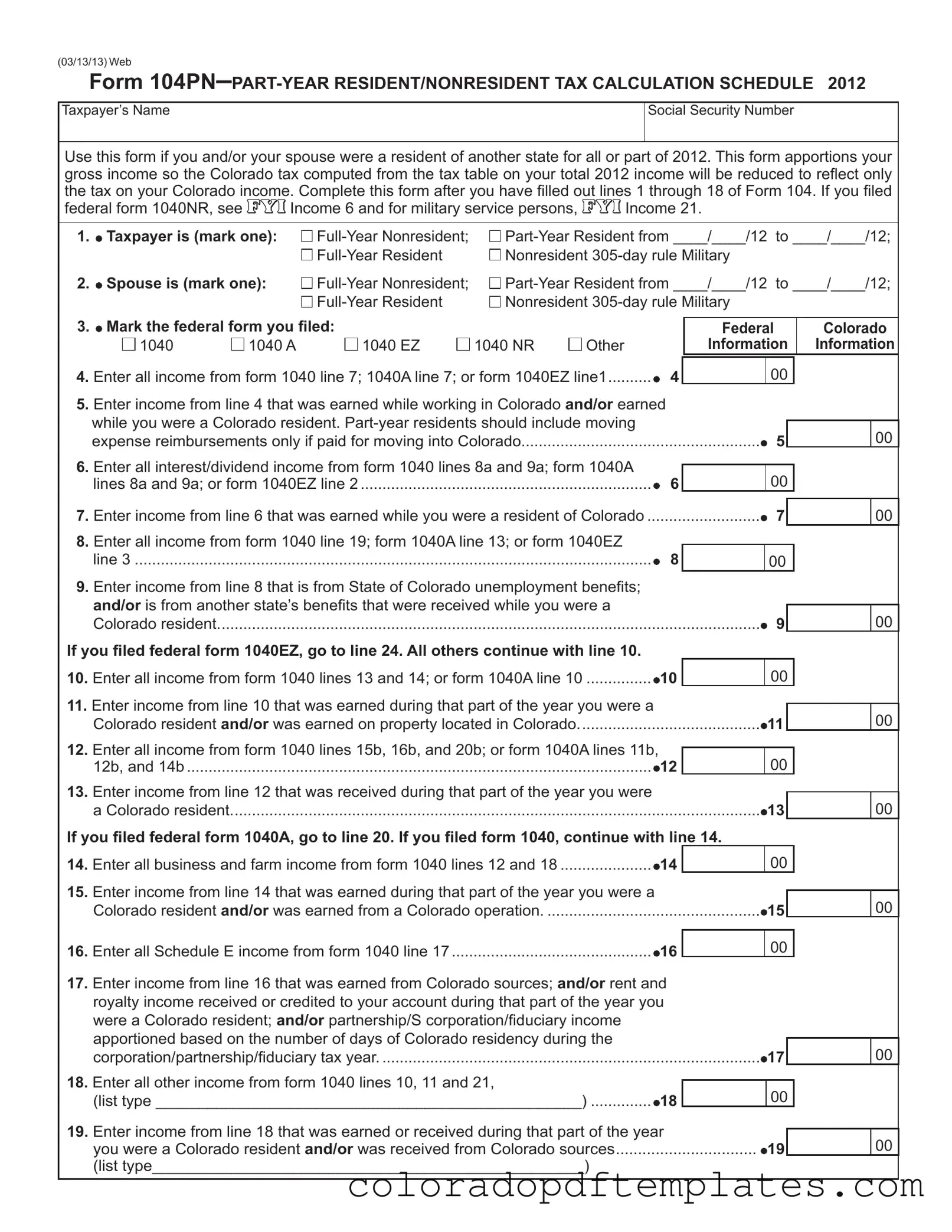The Colorado 104PN form is designed for individuals who were either part-year residents or full-year nonresidents of Colorado during the tax year. It helps to calculate the state tax owed based only on the income earned while residing in Colorado. By apportioning your gross income, the form ensures that you are only taxed on the income that is relevant to Colorado, rather than your entire income for the year.
This form is suitable for taxpayers who, along with their spouse, lived in another state for all or part of the tax year. If you filed a federal form 1040NR, or if you are a military service member, you should also consider using this form. It is essential for anyone who wants to accurately reflect their Colorado income and avoid overpaying state taxes.
To complete the form, first fill out lines 1 through 18 of the Colorado Form 104. After that, you will need to enter various types of income on the 104PN, specifying which portions were earned while you were a Colorado resident. The form guides you through this process with specific lines for different income types, such as wages, interest, dividends, and business income.
What types of income should I report on the 104PN?
You should report several types of income on the 104PN, including:
-
Wages and salaries earned while working in Colorado.
-
Interest and dividend income received while a Colorado resident.
-
Unemployment benefits received while residing in Colorado.
-
Business income generated from Colorado operations.
-
Any other income types specified on the form that were earned or received during your Colorado residency.
Make sure to differentiate between income earned while a resident and income earned elsewhere.
If you filed a federal form 1040EZ, you will have a simplified process. You can skip certain lines on the 104PN and go directly to line 24. This streamlined approach helps to reduce the complexity of the form for those with simpler tax situations.
How do I calculate my Colorado Adjusted Gross Income?
Your Colorado Adjusted Gross Income is calculated by taking your total income as reported on the 104PN and making any necessary adjustments. This includes subtracting certain federal adjustments and additions specific to Colorado. Lines 25 and 27 of the form will help you determine this adjusted figure.
If you realize that you made an error after submitting the 104PN, you can file an amended return. It's important to correct any mistakes to ensure that your tax liability is accurately reflected. The process for amending a return typically involves filling out a specific form designated for amendments and providing the correct information.
For additional assistance, you can visit the Colorado Department of Revenue's website, where you will find resources, instructions, and contact information for tax assistance. Additionally, consulting with a tax professional can provide personalized guidance based on your specific situation.
